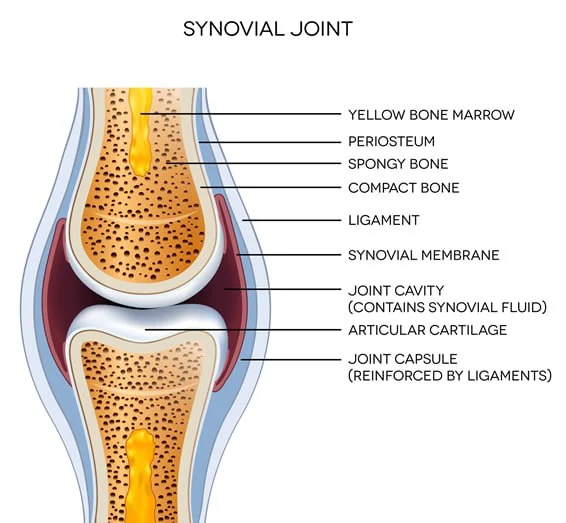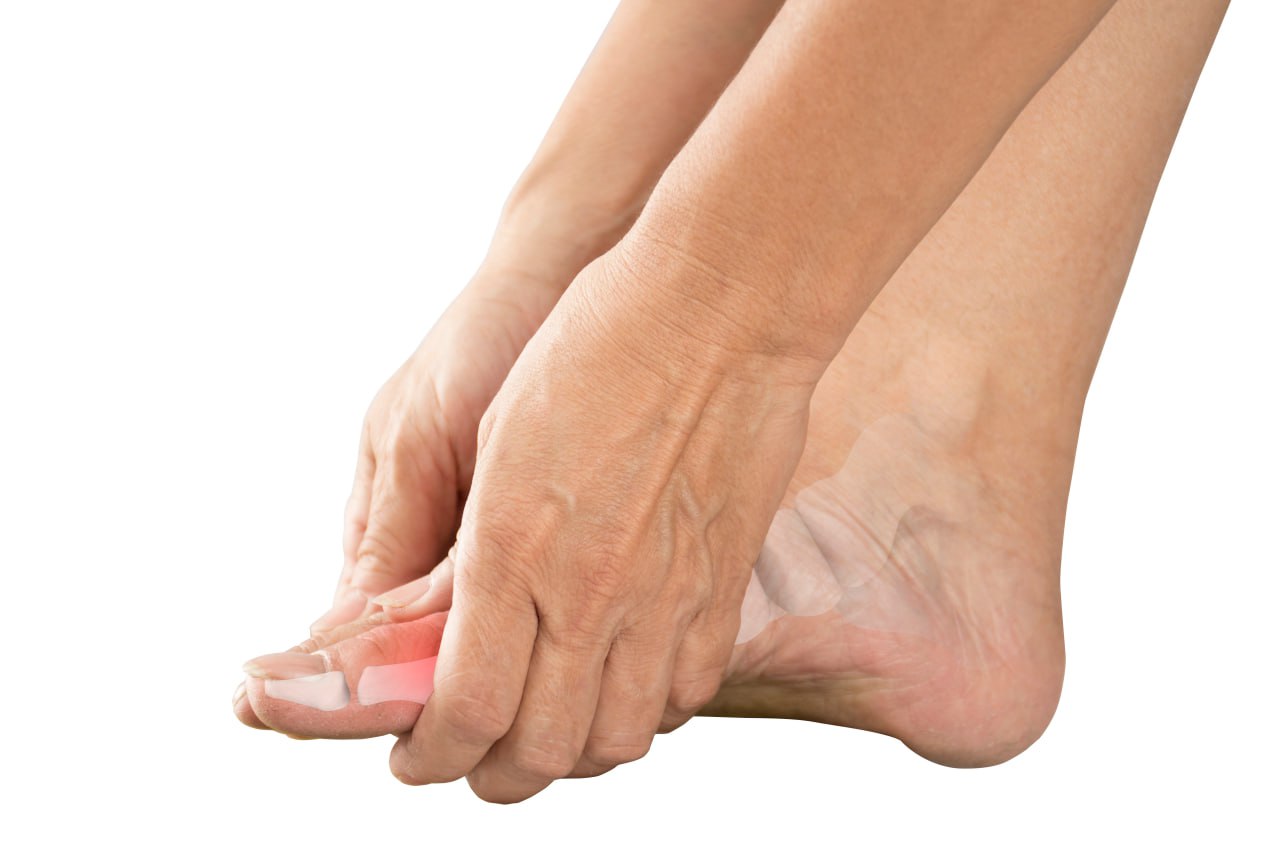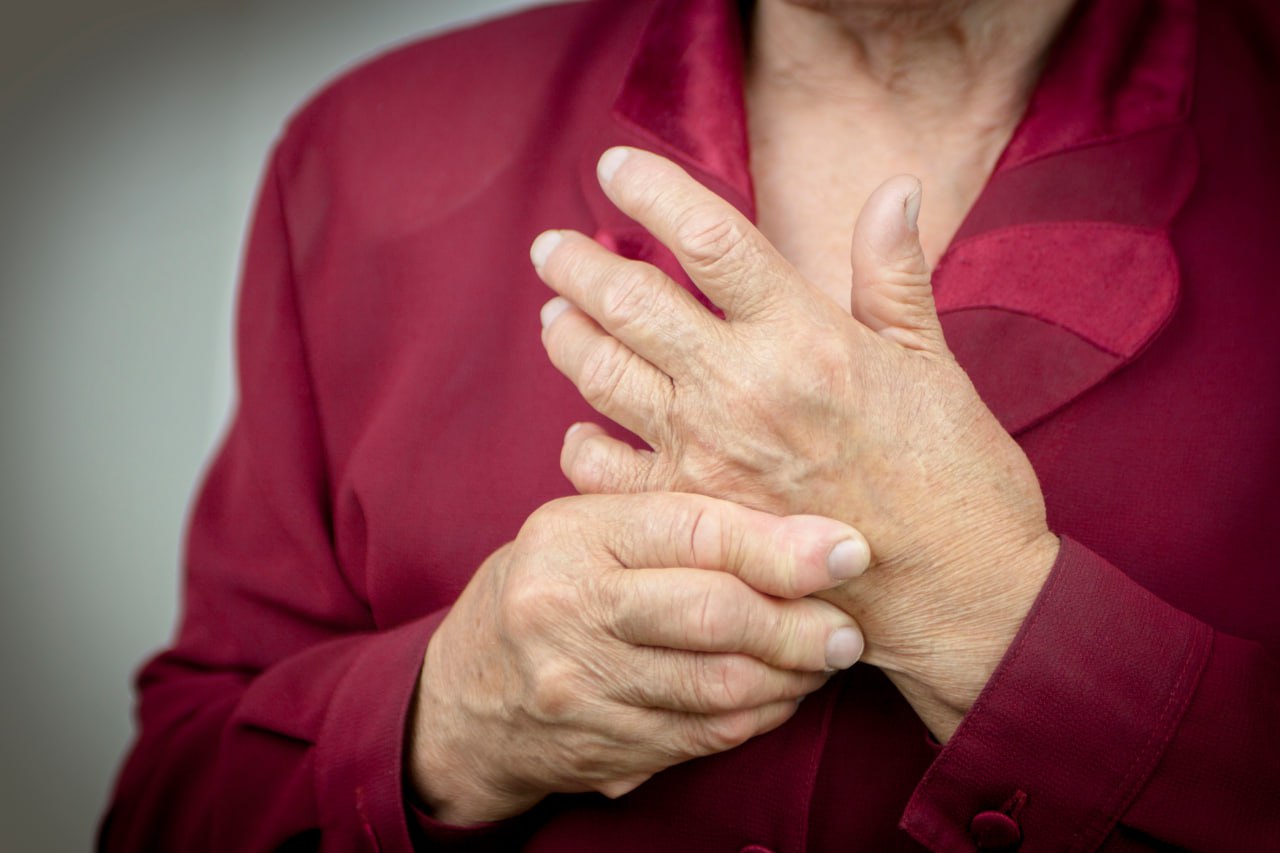Joint pain is arguably one of the most common musculoskeletal complaints among adults of all ages. But the fact that this condition is so widespread does not mean that it isn’t life-limiting, or that it should be overlooked.
Joint pain and swelling can cause you to experience severe stiffness, deal with throbbing or “grating” sensations, and battle major mobility issues. Over time, the pain can become so intense to stop you from living your professional, personal, and social life.
What’s more, in most cases, joint pain is only one of the symptoms of an underlying serious or degenerative medical condition.
But joint conditions – or taking medications daily to alleviate your discomfort – should not be considered normal aspects of the aging process. Thanks to the Neuragenex Neurofunctional Pain Management protocol, you can now regain your joint health without surgery or drugs. Let’s explore how in the guide below.
Negative Implications Of Pain And Swelling In The Joints
Joint pain refers to chronic or acute pain conditions that affect the joints, most commonly the knee, hip, shoulder, low back, and ankles. Each joint is a complex structure that connects two or more bones in the body, also thanks to a surrounding infrastructure of tendons, ligaments, muscles, cartilage, and nerves.

The joints play a major role in keeping the body mobile and the bones safe from friction and shock damage. However, traumatic injury, inflammation, and age-related degenerative changes can impact the health and functioning of these structures. When this happens, you may suffer from joint pain and swelling all over your body.
The swelling occurs as part of the inflammation process and due to the build-up of fluids in the soft tissue around the joint. Joint swelling, pain, and stiffness may be a symptom of a traumatic injury (i.e.: a dislocation or torn ligament), inflammatory conditions (i.e.: tendonitis), or diseases like arthritis.
While, in some cases, you may regain your musculoskeletal health in just a few weeks with at-home remedies, chronic joint pain, and swelling are much more than just a temporary or minor inconvenience.
This condition affects over 70% of older adults, in particular women and those aged between 65 and 80. Besides causing chronic pain, joint conditions also have severe consequences on a person’s ability to work and remain independent during aging.
According to UK estimations, musculoskeletal conditions account for 20% of the 141 million working days lost to sickness or injury. What’s more, studies show that 78% of people suffering from chronic joint pain conditions like gout lose at least 1 day of work a year due to flare-ups.
In terms of the financial impact of chronic joint pain, new arthritis research shows that those with joint pain spend on average $10,587 in healthcare costs a year, which is a significant increase from the $3813 spent by those without long-term musculoskeletal pain conditions.
Understanding the nature of your joint condition is the first step toward finding an efficient line of treatment that does not involve taking medications or undergoing surgery. Let’s look at the most common causes of joint pain and swelling all over the body below.
Conditions Associated With Pain And Swelling In The Joints
Effusion – or the abnormal build-up of fluids in the tissues that surround the joint – can lead to severe and sustained swelling. In turn, a swollen joint will lead to stiffness, reduced mobility, and pain.
Swelling is considered to be a normal part of the body’s inflammatory response: the body increases the circulation of blood and fluids around the site of injury to promote healing and fight back harmful microorganisms, like bacteria and viruses.
While temporary swelling should not affect your health in the long term, inflammatory and degenerative diseases of the joints can cause you to deal with swelling for months at a time.
Joint and pain swelling can be caused by a range of conditions, including:
- Different forms of arthritis, including spondylitis, gout, osteoarthritis, psoriatic arthritis, reactive arthritis, and septic arthritis
- Disorders of the immune system like lupus
- Inflammatory conditions like bursitis and tendinitis
- Traumatic injuries like fractures, broken bones, and dislocations
- Thyroid disorders such as having an underactive thyroid
You may also be at greater risk of developing chronic joint pain and swelling if you have had previous joint injuries, tend to overuse your joints, have arthritis, suffer from poor health and conditioning, and have depression or anxiety. Studies have also confirmed the direct correlation between obesity and being overweight and an increased risk of developing joint conditions.
To determine what’s causing your joint pain, your doctor may use a series of diagnostic tests, including a thorough review of your symptoms and medical history, a physical examination, a complete blood count, and imaging tests.
Below, we’ll look at the conditions that most commonly lead to joint pain and swelling.
Osteoarthritis
Osteoarthritis is a form of arthritis, an inflammatory condition that causes the deterioration of the cartilage – the “cushioning” substance located around the joint’s components. Also known as “wear and tear” arthritis, osteoarthritis tends to occur due to aging, overuse, mechanical problems, poor posture, and obesity.
As the cartilage breaks down, the bones begin to rub against each other during movement. This can cause the progressive deterioration of the bones and surrounding tissues, such as ligaments and tendons. Over time, the sustained high levels of inflammation cause joint pain, stiffness, and swelling, as well as clicking noises, catching sensations, and severely reduced mobility.
Rheumatoid Arthritis
Affecting over 1.3 million people just in the US, rheumatoid arthritis (RA) is the most common form of autoimmune arthritis. Being an autoimmune disorder, RA occurs when the immune system mistakenly attacks healthy cells and tissues in the body.

In particular, the immune system attacks the membranes that line and protect your joints. Over time, the sustained high levels of inflammation combined with the ongoing damage to the joint’s components cause fluid to build up in the tissues around the joint. The swelling and inflammation damage cartilage, bones, ligaments, and tendons, and cause the joints to appear deformed.
Gout
Gout is a common and extremely painful form of inflammatory arthritis. This condition occurs when there is an increase in uric acid in the body, which leads to the abnormal build-up of uric acid and needle-like crystals in the joints.

The uric acid, which is created by the body to break down certain substances, is normally dissolved in the blood and expelled through urination. However, too much of this substance is produced, it can begin to damage and break down components of the joint, such as the cartilage. Some of the key symptoms of gout include joint pain and swelling, but you may also notice tenderness and red skin, flaky, or peeling skin.
Fibromyalgia
Fibromyalgia is a chronic condition that can cause severe “widespread pain” in your joints, muscles, and throughout the body. The pain can be severe, affect both sides of the body, and worsen over time.
However, this isn’t a joint-specific disease like arthritis and it does not cause inflammation. Although current studies show that fibromyalgia may be caused by dysfunction of the immune system or the nervous system, research is ongoing to determine the causes and nature of this condition.
Although fibromyalgia does not cause damage to joints or muscles, people with this condition often experience arthritis-like symptoms, which include extreme fatigue, persistent joint pain, deep muscular aching, stiffness, burning and throbbing sensations, and abnormal feelings like numbness and tingling.
The pain caused by fibromyalgia changes in location and intensity over time, and it can be aggravated by factors like anxiety, stress, depression, sleep deprivation, exertion, and exposure to unfavorable weather conditions.
Chronic Fatigue Syndrome
Chronic fatigue syndrome, also known by its more scientific name, “myalgic encephalomyelitis (ME),” is a complex disorder identified by extreme fatigue.
It’s a condition that cannot be explained by any underlying medical condition. The fatigue associated with CFS cannot be improved by rest and can even worsen with physical or mental activity.
Edema
Edema is a medical condition that causes an excess of fluid to gather in your body’s tissues, including the joints. It usually occurs in the feet, lower legs, and ankles, but can affect any area of the body.
This build-up of fluids can result in swelling and subsequent joint pain. Although aging can make edema more likely, this condition is often caused by heart disease, liver disease, kidney disease, and any other disorder that hinders your body’s ability to remove excess fluids from its system.

Symptoms can range from a feeling of heaviness and stiffness to visible swelling in the affected areas, and intense pain when moving the impacted joints. Characterized by its sudden onset, edema can either be acute or chronic depending on the underlying cause and severity of your symptoms.
When To Seek a Medical Opinion
Being such a widespread condition, joint pain is often overlooked by adults of all ages. But often, joint swelling, pain, effusion, and loss of movement are the symptoms of a more serious underlying condition.
Because of this, it is critical to determine when it’s time to seek a medical opinion. In particular, you make an appointment with your healthcare provider if:
- The pain started briefly after a traumatic injury
- The swelling, edema, or effusion causing the joint to appear disfigured or malformed
- The swelling started without an apparent cause
- You are also experiencing severe loss of movement, fever, or pain
- The symptoms don’t improve within a day or two
- Your joint condition has started to interfere with your ability to work and take part in daily activities.
Common Treatment For Swelling In The Joints
Treatments for joint pain vary depending on the source of the problem. However, often chronic pain and swelling are treated using painkillers, at-home remedies, and, in severe cases, surgery.
Below, we’ll look at some of the most common treatment options prescribed for painful joint conditions.
- OTC Pain Medications: With over 66% of those with joint pain taking over-the-counter pain relievers, this is considered the most common line of treatment for joint pain. Painkillers like aspirin and acetaminophen, as well as non-steroidal anti-inflammatory drugs like ibuprofen, can help during flare-ups. It is important to keep in mind that these medications are not free of side effects, and they should only be taken under the supervision of a healthcare provider.
- Warm and Cold Compress: Warm compresses and hot baths can help an old injury or chronic inflammation site because they increase the circulation of blood, relieve muscle tension, and promote healing. On the other hand, if you’ve suffered a new trauma, cold compresses can reduce the flow of blood and liquids to the injured area, thus relieving swelling and pain.
- Corticosteroids: Steroids are a class of drugs that mimic the effect of a hormone normally found in the body. Often given by injection into the joint, steroids work over time by decreasing inflammation and slowing down the activity of the immune system.
- Physical and occupational therapy: If your joint condition is caused by poor posture, injury, or mechanical issues, working with a physical therapist can help you understand how to avoid putting excessive pressure on the joints, boost your conditioning level, and support the health of your musculoskeletal system.
- Surgical interventions: If pain medications and physical therapy have not yielded the expected results, you may consider undergoing surgery. Surgical interventions such as arthroscopy and joint replacement surgery can be used to repair damaged components of the joint or replace parts of the joints that are beyond repair. Even when opting for the least invasive procedure, joint surgery is always associated with lengthy recovery periods and painful rehabilitation programs.
At-home care such as resting, elevating your joint, and applying compression can help you deal with flare-ups or facilitate the healing of injuries such as strains, sprains, and inflammation caused by overuse.
Neuragenex Neurofunctional Pain Management To Treat Pain And Swelling
Many older adults consider joint pain to be a normal part of aging, and they tend to surrender to taking medications daily or living with the limitations imposed by their condition. However, this should not be the case.
Thanks to today’s advances in pain treatments, and the availability of non-drug, non-invasive protocols like Neuragenex Neurofunctional Pain Management , there is no reason why you should continue living with joint pain and swelling.
With the whole-person approach, Neuragenex Neurofunctional Pain Management, you can address your pain condition without surgery or medications, and change those aspects of your lifestyle that may be aggravating your joint pain and swelling.
Although each Neuragenex Neurofunctional Pain Management program is designed around the unique needs of each patient, here are the three forms of therapy at the base of this revolutionary approach.

Electroanalgesia
Electroanalgesia is a pain management technique that uses high-pulse electrical current to ease pain, boost blood circulation, improve mobility, and induce...
IV Therapy
IV nutritional therapy, or intravenous therapy, involves administering vital nutrients directly to the bloodstream through an IV. This type of treatment bypasses the digestive system, allowing for maximum absorption and utilization of nutrients by the...
Lifestyle Counseling
Lifestyle counseling is an approach to managing chronic pain that involves identifying, assessing, and modifying lifestyle factors contributing to an individual's pain. For example, lifestyle factors such as nutrition, physical activity, stress, sleep quality...
Read More About Joint Pain And Swelling Lifestyle Counseling
Conditions We Treat
Let us now explore the wide range of conditions that can benefit from the transformative effects of Neuragenex Neurofunctional Pain Management®, offering renewed hope and enhanced quality of life for countless individuals seeking effective and sustainable relief from their ailments.

Fibromyalgia Pain Treatment
Fibromyalgia is a chronic disorder that causes several symptoms, including widespread pain, fatigue, and cognitive impairment. Our non-surgical and drug-free treatments can help reduce the chronic pain associated with fibromyalgia. Additionally, our holistic...

Gout Pain Treatment
Gout is a painful condition that can cause severe joint inflammation and swelling. It can lead to chronic pain and mobility issues that can have an enormous impact on your quality of life. Fortunately, the Neuragenex Neurofunctional Pain Management protocol...

Rheumatoid Arthritis Pain Treatment
Rheumatoid arthritis can be a debilitating and painful condition that causes swelling, joint damage, and immobility. We offer a non-invasive, non-chiropractic solution to alleviate the pain associated with rheumatoid arthritis. Our treatments are designed to...

Osteoarthritis Pain Treatment
Osteoarthritis is often linked to joint pain. But the impact that this condition has on your life is of much greater magnitude. If you have osteoarthritis, the chances are that you experience a pain so intense that it prevents you from climbing stairs,...
Seek The Best Treatment For Your Symptoms
Relying on pain medications, dealing with the severe side effects of painkilling drugs, and expecting to need surgery in the next few years are daunting prospects – but they are no longer the only ones available.
The Neuragenex Neurofunctional Pain Management protocol is offering a non-drug, non-invasive, and none-chiropractic approach to chronic joint pain and swelling. Thanks to a whole-person, ad hoc program, you can restore the health of your musculoskeletal system, slow down the progression of degenerative diseases, and lay the foundations of long-term health.
You don’t have to live with constant pain. Learn how we provide non-surgical treatment options for fibromyalgia-related joint pain and swelling.




